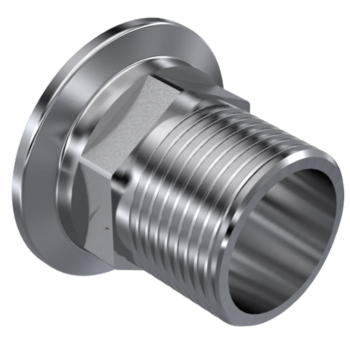Ring Type Joint Flanges Suppliers
RTJ Flange Manufacturer
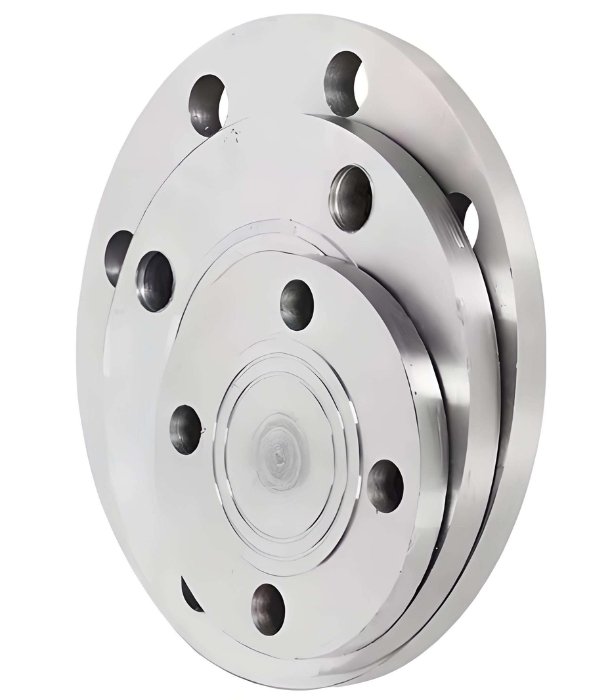
ASME B16.5 Ring Type Joint Flanges: Dimensions | Specifications | Material Grade | Standards | About RTJ Flange | All Product Types
Ring Type Joint Flanges, commonly referred to as RTJ Flanges, are high-integrity sealing flanges designed for critical and high-pressure piping systems. Unlike standard raised face or flat face flanges, RTJ flanges feature a precision-machined groove on the flange face, which houses a metal ring gasket. When bolted together, the gasket is compressed into the groove, forming a leak-tight metal-to-metal seal. This makes them ideal for high-temperature, high-pressure, and hazardous fluid applications, especially in refineries, offshore drilling, petrochemical, and power generation industries.
Manufactured according to ASME B16.5 and B16.47 Series A & B, Ring Type Joint Flanges are available in pressure classes ranging from Class 150 to Class 2500 and size ranges from ½″ to 48″ (DN15–DN1200). These flanges are commonly supplied in materials such as Stainless Steel, Carbon Steel, Alloy Steel, Duplex, Super Duplex, and High Nickel Alloys to withstand corrosive and extreme service conditions.
RTJ flanges are mostly used in conjunction with RTJ ring gaskets, available in oval or octagonal cross-sections, depending on the flange type. The sealing efficiency of RTJ connections helps reduce the risk of leakage in systems handling volatile media like hydrocarbons, acids, gases, and superheated steam. These flanges are also compatible with compact flange designs used in modern offshore platforms.
As one of the leading RTJ Flange suppliers, we ensure precise machining, accurate groove dimensions, and strict tolerance control as per international standards. Whether for sour gas pipelines or subsea manifolds, our RTJ flanges are trusted for long-term durability, metallurgical integrity, and perfect sealing in extreme conditions.
Ring Type Joint Flanges (RTJ) for High-Pressure Sealing – ANSI B16.5 / B16.47 Flanges in Steel & Exotic Alloys
For complete technical details, including dimensions, pressure rating classes, weight charts, sizes, tolerances, and material specifications of our ANSI B16.5 RTJ Flanges, please download the full Catalog PDF below.
Precision-Machined RTJ Flanges with Octagonal / Oval Grooves – Classes 600 to 2500 – Sizes ½″ to 48″ – Designed for Extreme Applications
Technical Specifications of RTJ Flanges
| Specification | Details |
|---|---|
| Type | Ring Type Joint (RTJ) Flange – Available in Weld Neck RTJ, Blind RTJ, Slip-On RTJ, and Lap Joint RTJ variations |
| Design Standard | ASME B16.5, ANSI B16.5, ASME B16.47 Series A & B, API 6A, MSS-SP-44, BS 4504, EN 1092-1 |
| Size Range | ½″ NB to 48″ NB (DN15 to DN1200) |
| Pressure Ratings | Class 150, 300, 600, 900, 1500, 2500 |
| Gasket Groove Type | Precision-machined octagonal or oval grooves for metal ring gaskets |
| Face Type | Ring Type Joint (RTJ) face only |
| Flange Thickness | As per ASME B16.5 / B16.47 or EN dimensional standards |
| Surface Finish | 63-125 AARH standard finish (as per ASME B16.5 for RTJ flanges) |
| Gasket Compatibility | Compatible with metal ring gaskets (oval or octagonal) – R Series, RX, BX types |
| Connection Ends | Butt Weld (for WNRF), Flat for Blind RTJ, or custom as per design |
| Applications | High-pressure and high-temperature environments – Refineries, Offshore, Petrochemical, Oil & Gas pipelines, HP steam systems |
| Inspection & Testing | Hydro test, Dimensional check, NDT (UT/MPI), Hardness, PMI |
| Coating/Protection | Rust preventive oil, black paint, zinc coating, or as per customer request |
| Certification | EN 10204 Type 3.1 / 3.2, IBR Approval, ISO 9001, PED 2014/68/EU, NACE MR0175 / ISO 15156, ISO 9001, Third-party inspection if required |
| Origin | Made in India (by Nutech Overseas) |
| Export Network | USA, Europe, and Middle East |
Complete Material Grade Chart - Class 150 RTJ Flange
| Material Category | RTJ Flange Grades |
|---|---|
| Stainless Steel RTJ Flange | ASTM A182 F304 / F304L / F304H, F316 / F316L / F316Ti, F310, F309S, F317 / F317L, F321 / F321H, F347 / F347H, F904L, ASTM A351 CF3 / CF3M / CF8 / CF8M / CF8C, DIN 1.4301, 1.4306, 1.4307, 1.4311, 1.4401, 1.4404, 1.4408, 1.4409, 1.4541, 1.4571, 1.4550, 1.4435, 1.4539 |
| Duplex Steel RTJ Flange | ASTM A182 F51 / F52 / F53 / F54 / F55 / F57 / F59 / F60 / F61, UNS S31803 / S32205 |
| Super Duplex Steel RTJ Flange | ASTM A182 F53 / F55 / F57 / F59 / F60 / F61, UNS S32750 / S32760 |
| Carbon Steel RTJ Flange | ASTM A105 / A105N, ASTM A350 LF2, ASTM A694 F52 / F56 / F60 / F65 / F70 / F80, ASTM A216 WCB, DIN 1.0460 / 1.0402 / 1.0619, Die Steel, Mild Steel |
| Alloy Steel RTJ Flange | ASTM A182 F5 / F9 / F11 / F12 / F22 / F91, AISI 4130 / 4140 |
| Nickel Alloy RTJ Flange | Nickel 200 / 201, ASTM B564 |
| Monel RTJ Flange | Monel 400 (UNS N04400), Monel K500 (UNS N05500), ASTM B564 |
| Inconel RTJ Flange | Inconel 600 / 601 / 625 / 690 / 718 / 783 / X750, ASTM B564 |
| Incoloy RTJ Flange | Incoloy 800 / 800H / 800HT (UNS N08800), Incoloy 825 (UNS N08825), Incoloy 925, ASTM B564 |
| Hastelloy RTJ Flange | Hastelloy C276 (UNS N10276), C22 (UNS N06022), C4, C2000, B2, B3, X, ASTM B564 |
| Alloy 20 RTJ Flange | Alloy 20 / 20Cb-3, Carpenter® 20, ASTM B462 |
| 254 SMO RTJ Flange | SMO 254 / 6Mo, UNS S31254, DIN 1.4547, ASTM A182 |
| Copper Nickel RTJ Flange | Copper Nickel 90/10 (C70600), 70/30 (C71500), UNS C71640, ASTM B61 / B62 / B151 / B152 |
| Copper RTJ Flange | TP1, TP2, T1, T2, C10100–C12300, C14200–C17200, C21000–C71520, including C10930, C11000, C11400, C12000, C12200, C26000, C28000, C33000, C44300, C70600, etc. |
| Brass RTJ Flange | Grades 3602, 2604, H59, H62, etc. |
| Aluminium RTJ Flange | Aluminium Grades 5052, 6061, 6063, 2017, 7075, etc. |
| Titanium RTJ Flange | ASTM B381 Gr.1 / Gr.2 / Gr.4 / Gr.5 / Gr.7, UNS R50250 / R50400 / R50550 / R50700 / R52400 / R53400 / R56320 / R56400 |
| Other Special Grades | Al6XN, Tin Bronze, Aluminium Bronze, Lead Bronze, Nimonic 75 / 80A / 90 |
International Flange Standards We Manufacture & Supply
A Ring Type Joint Flange is a precision-engineered flange that features a grooved face designed to accommodate a metal ring gasket. This metal-to-metal sealing mechanism provides a leak-proof connection, even under extreme pressure and temperature.
The ring gasket is compressed into the groove when bolted, creating a seal that prevents fluid or gas from escaping. This makes RTJ flanges ideal for:
- High-pressure oil and gas lines
- Steam and chemical pipelines
- Subsea systems and offshore rigs
They are commonly manufactured as RTJ Weld Neck or RTJ Blind Flanges, following standards like ASME B16.5 and API 6A.
RTJ (Ring Type Joint) and RF (Raised Face) flanges differ in both sealing mechanism and application suitability:
Sealing Design
- RTJ Flange uses a metal ring gasket seated in a precision-machined groove, offering a metal-to-metal seal.
- RF Flange uses flat or spiral wound gaskets, compressing between flat surfaces for sealing.
Pressure & Temperature
- RTJ flanges are built for extremely high pressure and temperature environments, often in subsea, refinery, or offshore drilling operations.
- RF flanges are more versatile and suitable for moderate to high pressures, used in general industrial pipelines.
Cost & Maintenance
- RTJ systems are more cost-intensive, but they offer superior reliability.
- RF flanges are more economical and easier to maintain, making them popular in standard applications.
Ring Type Joint flanges require metal ring gaskets that fit precisely into a machined groove on the flange face, ensuring a pressure-tight metal-to-metal seal.
Common Types of RTJ Gaskets:
- R-Type Ring Gasket: Oval or octagonal in shape; most widely used and compatible with standard RTJ grooves.
- RX-Type Gasket: High-pressure variant of R-type; self-sealing and suitable for pressure cycling.
- BX-Type Gasket: Designed for API 6A flanges; suitable for very high-pressure applications up to 20,000 psi.
Material Selection Tips:
- Soft Iron, Low Carbon Steel: For mild service and moderate temperatures.
- Stainless Steel (SS 304 / 316 / 321): For corrosion resistance and chemical exposure.
- Inconel / Monel / Hastelloy / Duplex: For aggressive environments like offshore, chemical plants, or refineries.
Selection Factors:
- Match gasket material to flange and media.
- Ensure gasket type matches flange groove design (R, RX, or BX).
- Consider pressure rating, temperature, and fluid type.
Ring Type Joint (RTJ) Flanges are highly recommended for sour service (as defined by NACE MR0175/ISO 15156) and critical isolation points because of their leak-proof metal-to-metal sealing and high resistance to aggressive environments.
Reasons RTJ Flanges Excel in These Conditions:
- Leak Integrity: The gasket is compressed into a machined groove, ensuring no gap remains for corrosive gases like H₂S to escape.
- Corrosion-Resistant Materials: Often manufactured from Inconel, Monel, Duplex, Super Duplex, or Low-Alloy Steels with added PTFE or anti-corrosive coatings.
- High Pressure Ratings: Suitable for Class 900 to 2500 pressure systems — ideal for critical isolation of high-pressure lines.
- Compliance with NACE & Offshore Standards: RTJ flanges are engineered to withstand sulfide stress cracking, a common threat in sour gas fields.
We export high-quality Ring Type Joint (RTJ) Flanges to a wide range of industries and EPC contractors across the globe. Our major export destinations include:
- United Arab Emirates (UAE) – for oilfield applications and petrochemical plants
- Saudi Arabia & Oman – for offshore drilling rigs and gas processing units
- USA & Canada – for high-pressure pipeline systems and refinery projects
- Germany, Italy & Spain – for power generation and marine industries
- Singapore & Indonesia – for shipbuilding and LNG terminals
- Qatar, Kuwait & Bahrain – for desalination and oil export terminals
- South Africa & Egypt – for energy infrastructure and fabrication units
All RTJ flanges are export-ready with certified packaging, heat numbers, test reports, and documentation like EN 10204 3.1 / 3.2, IBR, NACE MR0175, and ISO 9001, ensuring smooth customs clearance and international project approvals.
While technically possible, RTJ flanges are not typically reused without re-machining. The sealing groove and ring gasket undergo deformation during tightening, which may affect their sealing ability upon reinstallation.
In critical applications, it's strongly recommended to replace both the gasket and reface the groove or use new RTJ flanges entirely to maintain system integrity. This practice aligns with industry standards for pressure integrity and safety in oil & gas and petrochemical plants.
Browse The Products
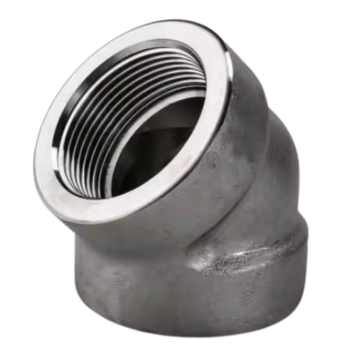
Forged Fittings
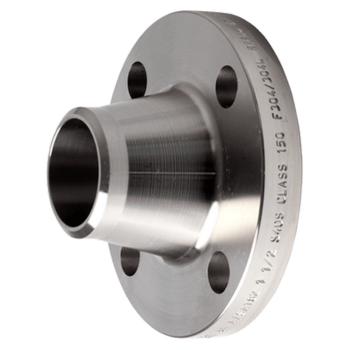
Flanges
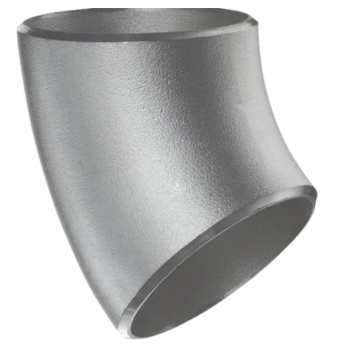
Buttweld Fittings
